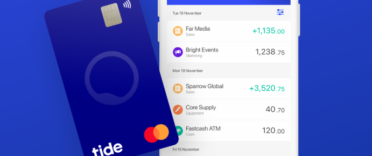One of the main cornerstones of any business is a realistic and comprehensive business plan. Without a business plan you will have nothing to judge your business performance against on a monthly basis and it may hinder your progress should you need to apply for credit such as a business loan.
Why do I need a business plan?
A good business plan will keep you up to date on the following key areas of your business on a month-by-month basis.
- Key business drivers
- Monthly income
- Monthly expenditure
- Profit and loss
- Forecast for the year ahead
How to create a business plan
I will now walk you through how to create a comprehensive business plan that will transform the way you view your business.
You will need to open a spreadsheet on your PC or laptop and put the months of the year along the top, also enter a heading for each quarter as well a year-end total.
There should be three main areas to your business plan.
- Key result areas (KRAs) - these are the main drivers for your business e.g sales units, sales income, completed sales, business pipeline etc. it's important that these are the drivers that are relevant to your business and will, at a glance, give you an insight to your business performance. Enter the KRA headings down the left-hand side of the spreadsheet.
- Income - in this area you will record all your anticipated income month by month broken down into income streams. Enter the income stream headings in a separate section below the KRAs.
- Expenditure - in this area you will record all your anticipated expenditure month by month broken down into categories eg. rent, wages, vehicles etc. Enter the expenditure headings in a separate section below the income
Now, you should have a template with monthly/quarterly/annual headings along the top and KRA, income and expenditure headings down the side.
Completing your business plan
So, now it's time to fill in some numbers to bring this business plan to life.
- Spend some time thinking about the KRAs and create some targets for each month under each heading of your main business drivers. Make sure you account for any seasonal variances and holiday periods and don't be too ambitious in your targeting, your KRAs should be stretching but achievable.
- Next translate your KRAs into income on a monthly basis. You need to make sure that you allocate income into the relevant month, as in many businesses there is delay between sales and actual income in the bank.
- Finally you need to put all the expected expenditure into the relevant month. Don't just automatically divide annual/quarterly expenditure into monthly amounts you need to record expenditure in the month it will be made from your bank account.
You can now add the spreadsheet across to achieve quarterly and annual totals. Then total the income and expenditure sections down by month, and by subtracting one from the other you will get a monthly profit or loss.
Now you have a completed business plan for the year ahead showing all your anticipated KRAs, income and expenditure together with a profit and loss on a monthly, quarterly and annual basis. Save this spreadsheet and label it 'Budget'
Working with your business plan
Once you have created your business plan for the year ahead it needs to become a working document as the year progresses using the following steps.
- When each month ends enter the actual figures into all areas of the spreadsheet. So, for instance at the end of January, you will have the actual figures for January together with budgeted figures for the remaining eleven months.
- Using the actual figures for the month decide whether any budgeted figures for the remainder of the year need to be amended. This is a working document that turns budgeted figures into actual figures as the year progresses and also acts as a forecasting document. For example, if your sales figures are well ahead of your budgeted total in the first quarter there is a strong argument that the monthly sales and income budget figures for the rest of the year should be increased.
- Save this spreadsheet and label it 'Actual/Forecast'
Conclusion
Now, you will have two documents a 'Budget' business plan and 'Actual/Forecast' business plan. The Actual/Forecast business plan is your working document that will give you all the information you need on a monthly basis to monitor the performance of your business.
Whether you are a 'one man band' or employ numerous employees without a business plan you are operating your business blindfold. Take time now to create your own business plan and you will be amazed at how it will bring real insight into your business.
Further reading
How to open a business bank account
Best business bank accounts in the UK
Best business bank accounts for freelancers
Best business accounting software
Business insurance policies you should consider
Compare the best and cheapest business credit cards






